Using Equipment
Using Equipment Revision
Using Equipment
Being able to use scientific equipment in experiments to accurately measure your results is a vital skill. Any errors or mistakes could lead to anomalies or incorrect measurements, which will affect the reliability of your results. This page will talk through some different examples of scientific equipment and how to use them.
Measuring Mass
A balance is used to measure mass (not weight).
You must always zero your balance before placing the substance that you want to measure on it. There is usually a button on the balance to do this.


If you are measuring the mass of a substance that is in a container (i.e a beaker of water) and you only want the mass of the substance, you should place the empty container on the balance and then zero it. Then add your substance to the container. The reading of the balance will be the mass of the substance only.
Or, if you know the weight of the container, you can zero your scale and place the substance on the scale in the container. Then just subtract the mass of the container from the total mass to give the mass of the substance.
Measuring Lengths
The most obvious piece of equipment to measure a length is a ruler. However different experiments might require different lengths of rulers with different levels of precision.
For example, for an experiment investigating Hookes law, a \boldsymbol{30} \: \textbf{cm} ruler might be the most appropriate choice because the lengths measured might only be a few centimetres. A 30 \: \text{cm} ruler also has millimetre increments allowing for a more precise measurement.
However a 30 \: \text{cm} ruler might not be appropriate for an experiment measuring reaction times, because it’s not large enough.
Another example would be measuring cells and other small organisms on a microscope. Obviously any normal ruler would be far to big and imprecise. Eyepiece graticules are tiny rulers on a small piece of glass that are used in microscopes, and they can often have divisions of just 0.01 \: \text{mm}.
One common issue that can come with using rulers is parallax error. Parallax error is the difference in measurements when viewed from different angles. It can mean that your recorded measurement differs from the real measurement. To ensure this doesn’t happen, we must always view our measurement level. Parallax errors can also arise from using other similar measuring equipment, such as measuring cylinders and burettes.
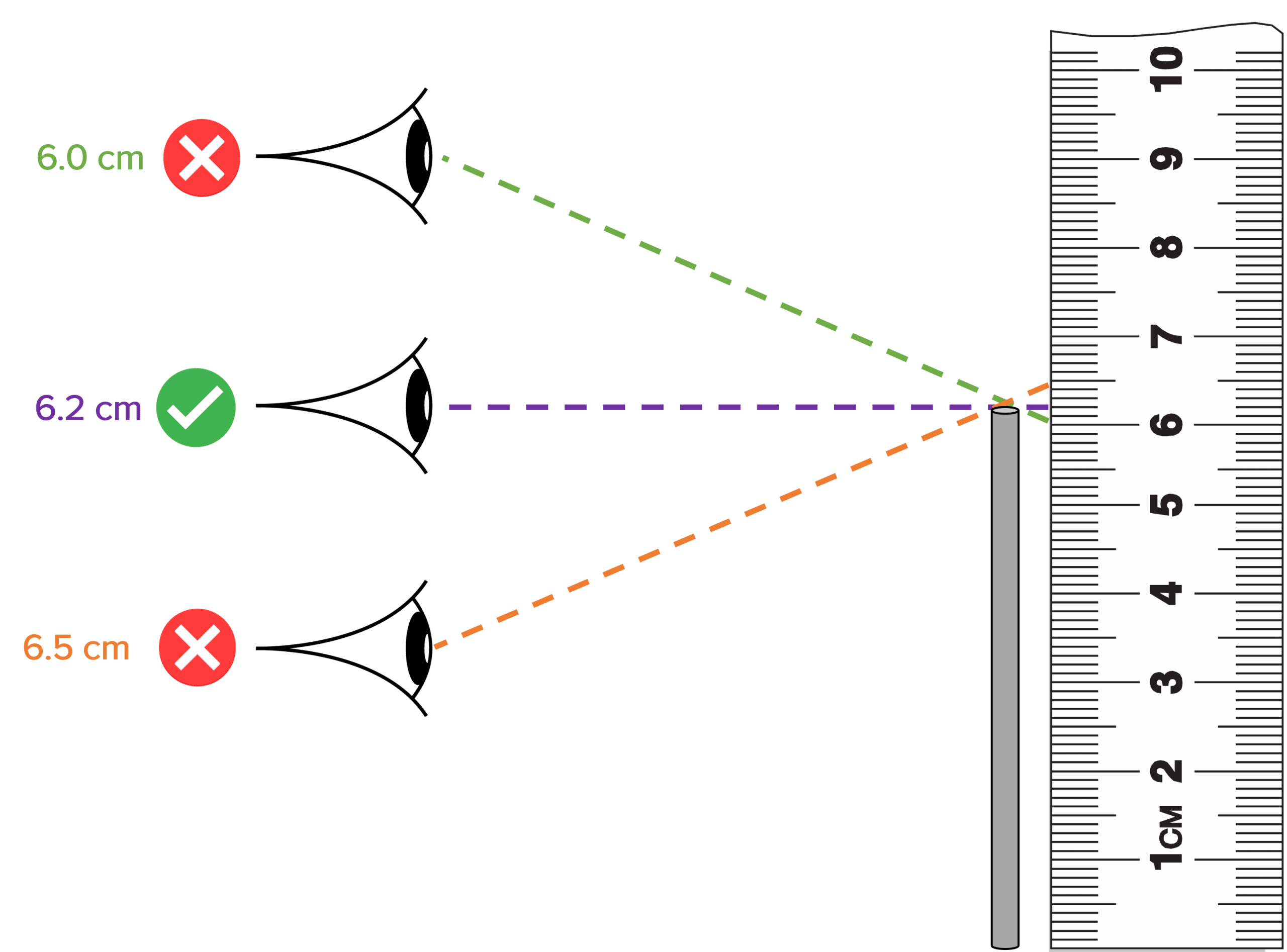
See the image above. A student is trying to measure the length of a metal cylinder. See how if the student was to look from the above or below, the measurement would be incorrect. This is a parallax error. The only way to get the true measurement is look with your eyes level with the object and the measuring equipment.
Measuring Volumes
Solids
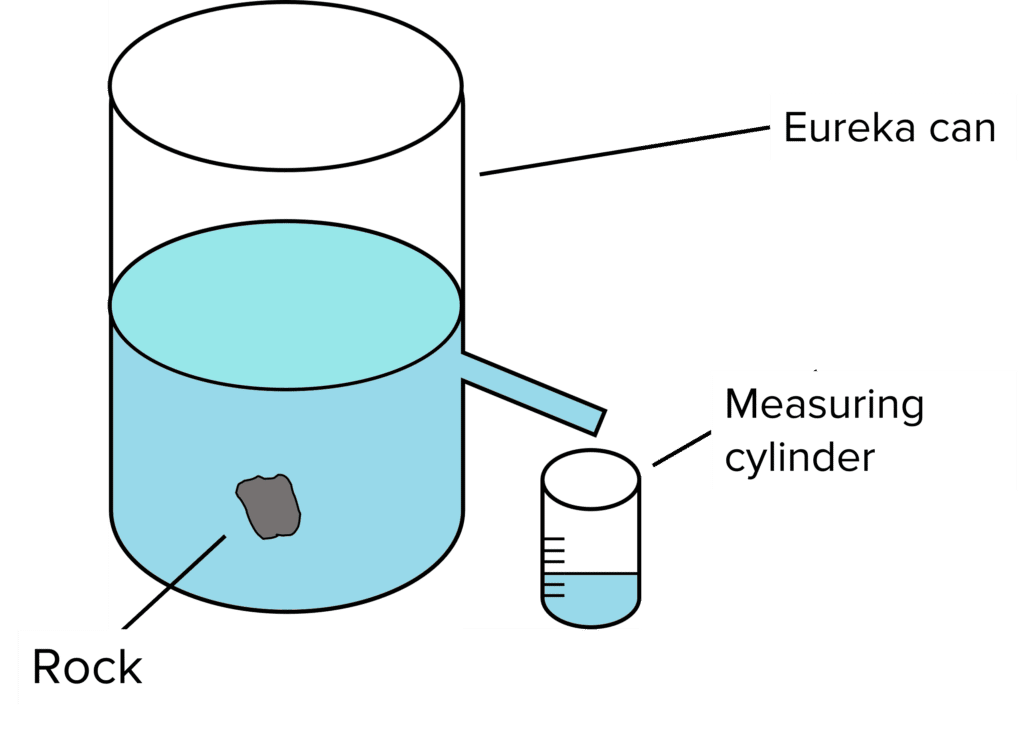

To measure the volume of most solids, the best way is to use the displacement method.
We use eureka cans with measuring cylinders to find the volume of irregular shaped objects. Set up a eureka can filled with water just up until the spout, with a measuring cylinder just underneath the spout to catch the water. Then place the object in the eureka can. The rock will displace the water into the measuring cylinder. The volume of water in the measuring cylinder corresponds to the volume of the object. It is important that no water is spilled, and that the experiment is conducted on a level surface.
Liquids
When measuring the volumes of liquids, there are many different pieces of equipment that can be used.
Measuring cylinders are the most common equipment that you will come across. They can range from 100 \: \text{ml} cylinders that you will use in school, to massive 10 litre cylinders used in industrial chemical processes. It is important you choose an appropriately sized beaker for the amount of liquid you are measuring. Too large of a beaker will mean that the increments are to large to accurately measure the volume of the liquid.
For smaller volumes, pipettes can be used. These often have a capacity of around 10 \: \text{cm}^3 or less. They are used to transfer a certain volume of a liquid from one container to another in an experiment. For example, if you wanted to add an accurate volume of acid to an alkaline to neutralise it.
The most accurate way of measuring volumes of liquids is using burettes. A burette is a thin glass tube with a tap at one end. It has precise divisions which means the equipment has a high resolution. We can use the tap to release one drop at a time, meaning we can add very small and specific volumes of a substance. More information about burettes can be found here.
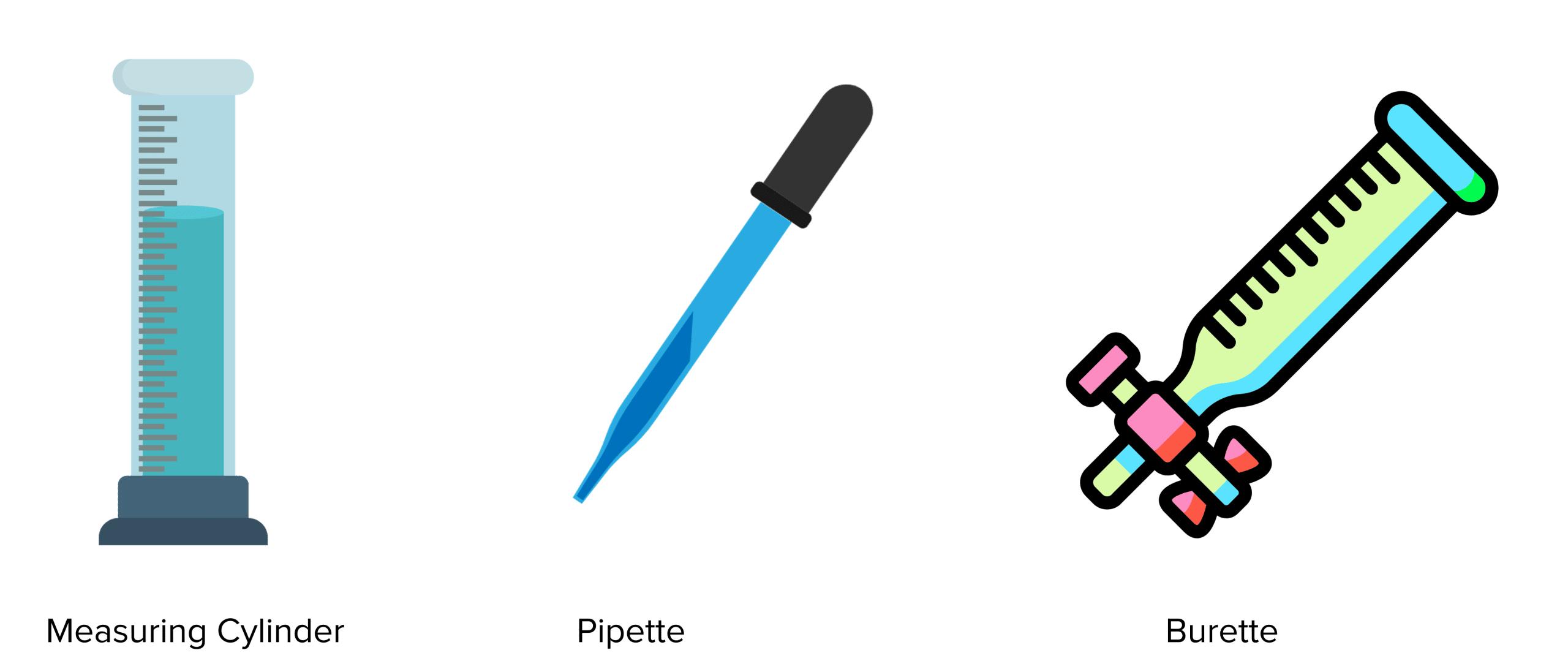
Gases
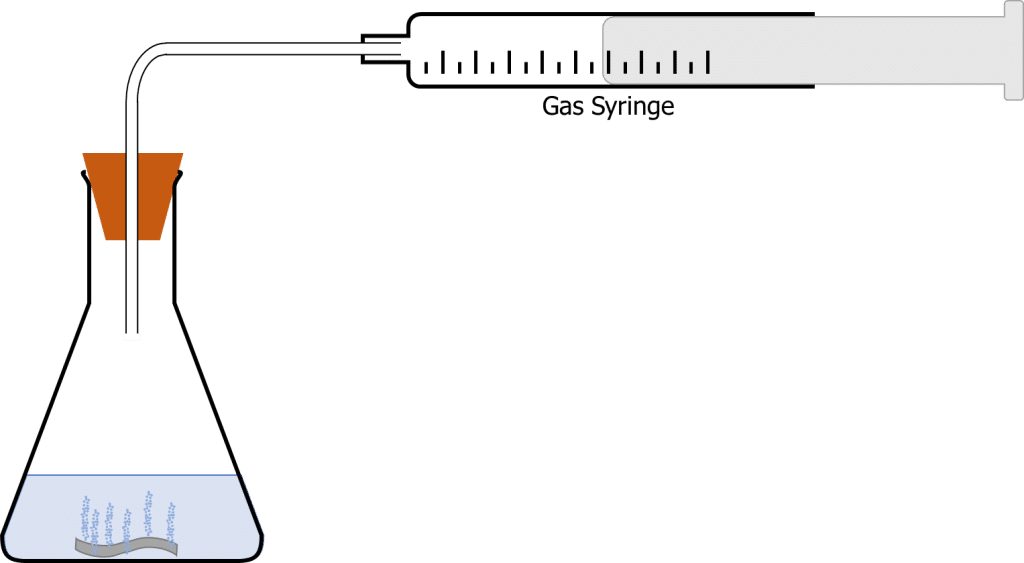

Gas syringes are used to measure volumes of gases. It is vital that the gas syringe is completely sealed when using it. If it is not, gas can escape and the volume measurement will be inaccurate.
Another method could be counting bubbles, like in the rate of photosynthesis practical. This however is less accurate than using a gas syringe, but it is still useful.
See the experimental set up below that shows how a gas syringe might be used in chemistry. More information on this experiment can be found here.
Measuring Temperature and pH
We use a thermometer to measure the temperature of substances in experiments. Usually we’ll use a thermometer that measures in degrees Celsius \left(\degree \text{C}\right).
Like with rulers, we should view the thermometer at eye level to record our reading, to avoid parallax error.
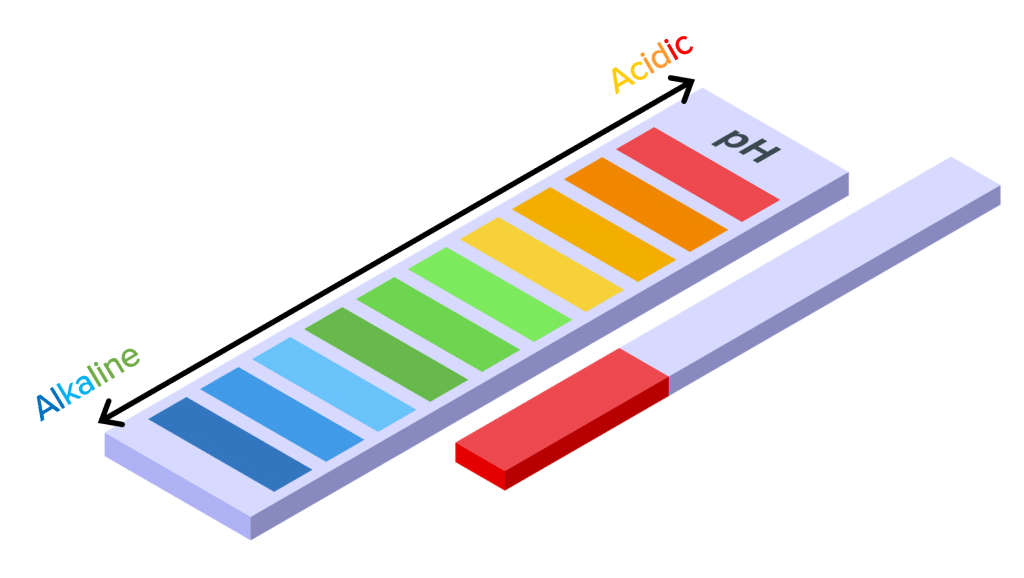

The pH of a substance measures how acidic or alkaline a substance is. The pH scale ranges from 0 to 14, with 7 meaning that the substance is neutral. The pH and the substance is acidic, more than 7 and the substance is alkaline. It can be measured using universal indicator. This is a solution that when added to a substance, will change it’s colour corresponding to its pH from the pH scale. We can also use universal indicator paper to dip into the substance, and the paper will change colour according to the pH of the substance.
Measuring Rates


The rate of something is just how it changes with time. For example, in your experiments you might measure the rate of photosynthesis, the rate of chemical reaction or the rate of acceleration.
To measure the rate of a process, we must know the time taken for this process to happen. In your practicals, you will use a stopwatch to do this. To ensure the most accurate time is recorded, make sure you start and stop the stopwatch at the right times.
There might be inaccuracies in the results because of human error when starting and stopping the stopwatch. In some experiments we can eliminate this problem by using light gates, which will automatically record the time taken.
Using Equipment Example Questions
Question 1: State the physical quantity that you would use a balance to measure.
[1 mark]
Mass.
Question 2: Describe how parallax error can arise when measuring using a ruler, and give one way we can reduce the effect of this error.
[2 marks]
Parallax errors can arise if you read the measurement from above or below the ruler.
This can be eradicated by always reading the measurement at eye level to the ruler.
Question 3: A student wants to transfer a volume of 5 \: \text{cm}^3 of a liquid from one beaker to another. Suggest a piece of equipment they should use.
[1 mark]
Pipette.
Question 4: Describe how we might measure the rate of a process in an experiment.
[2 marks]
We can measure the rate by measuring the time taken for the process to happen using a stopwatch. This can then be used to calculate the rate.





